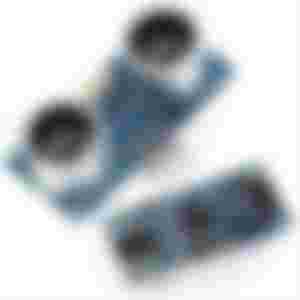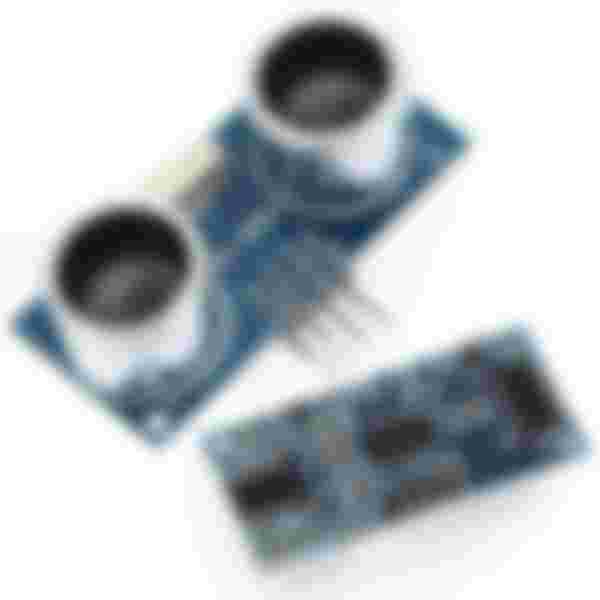Proximity Sensor Technology and Types
There are many technologies that work non-contactly to detect an object or measure distance and fall within the scope of proximity sensors. Each of these technologies has different working principles, advantages and disadvantages. In this article, we will review four of the most popular proximity sensor technologies that will suit portable or small fixed embedded systems and are suitable for medium sensing ranges.

Before continuing, it is important to note that no proximity sensor technology can offer a one-size-fits-all solution for every application. There are many factors to consider when choosing a proximity sensor technology, including cost, detection range, packet size, refresh rate, and the impact of materials. These mentioned factors play a key role in sensor selection.
Ultrasonic Technology
Ultrasonic sensors work by emitting high-frequency sound waves. The object is detected by the reflection of the produced sound waves from the object. They can also measure distance using the time between the sound's output time and its return time. Ultrasonic sensor application can use the receiver and transmitter as a single module combined or as separate modules. In the case of separate modules, the proximity of the receiver and transmitter becomes important for the accuracy of the measurement.
Due to their simple design, ultrasonic sensors are a low-cost option. Ultrasonic sensors, which can send hundreds of waves per second, have a high refresh rate. Since ultrasonic sensors rely on sound rather than electromagnetic waves, the color and transparency of objects, as well as whether the environment is light or dark, have no effect on the accuracy of the measurement. But the speed of sound is directly affected by temperature. Serious changes in temperature seriously affect the accuracy of the measurement. Inaccuracies in calculations can be corrected by measuring temperature, but this is still a disadvantage of ultrasonic sensors.
Ultrasonic sensors also do not work properly with soft or absorbent materials that do not allow sound to be reflected efficiently. Finally, ultrasonic sensors are not designed for underwater use, and their dependence on sound waves means they are functional in a vacuum where there is no medium for sound transmission.
Photoelectric Technology
Photoelectric sensors, the most effective tool for detecting an object, are recognized for their use in a variety of industrial, residential and commercial applications, as well as in garage door sensors or for passenger counting in shops. Photoelectric sensors with no moving parts generally have a long lifetime. They can detect most materials, but transparent objects or water can cause problems. Photoelectric sensors; It has many applications such as mutual type photoelectric sensors, reflective type photoelectric sensors and diffuse reflection photoelectric sensors.
Reciprocal type photoelectric sensors are the application in which a transmitter and receiver are placed opposite each other, which can also be known as a garage door sensor. With any interruption in the beam between these two points, the sensor detects the presence of an object.
In reflector type photoelectric sensors, the transmitter and receiver are placed side by side. Opposite them, a retro-reflecting object called a reflector is placed to transfer the beam from the transmitter to the receiver. The presence of the object is detected when any intervening object prevents the receiver from receiving the beam.
Diffuse photoelectric sensors work in a similar way to reflective type photoelectric sensors. But instead of reflecting the beams from a reflector, it reflects the beam from any nearby object such as ultrasonic sensors. Unlike ultrasonic sensors, this application does not have the ability to calculate distance.
Through-type photoelectric sensors and retro-reflective photoelectric sensors offer long detection ranges and fast response times, while diffuse-reflective photoelectric sensors are good at detecting small objects. Photoelectric sensors are a robust solution commonly found in industrial environments that do not contain lens contaminants. Distance calculation is an almost non-existent feature of photoelectric sensors. Also, the object color and reflectivity of the object can cause problems.
Various photoelectric applications require careful assembly and alignment, which can pose additional challenges in complex systems.
Laser Range Finder Technology
Using electromagnetic beams instead of sound waves, laser rangefinder sensors work similarly to ultrasonic sensors. Although this technology has become more economically viable in recent years, it is still a very expensive option compared to ultrasonic and other technologies.
Laser rangefinder technology has an extremely long detection range of up to tens or thousands of meters, combined with a fast response time. Because the speed of light is much faster than the speed of sound, measuring the beam's total flight time can be difficult. Applications such as interferometry are used to reduce cost and increase accuracy at distance.
As mentioned earlier, laser distance meters are by far the most expensive technology discussed in this article. It is therefore unreasonable for many engineers' bills of materials. The lasers used in this sensor technology also draw a lot of power, limiting its use in portable applications, while also exposing users to various eye risks.
Depending on the intended application, the focused detection area and lack of scattering of a laser can be seen as an advantage or a disadvantage. Also, distance meters do not perform well when working with water or glass.
Inductive Technology
Although based on an old working principle, inductive sensors have recently gained widespread use. Unlike the other three technologies discussed so far, inductive technology is only suitable for metallic objects.
Inductive sensors use the basic working principle of metal detector. Changes in its magnetic field occur when metallic objects enter the detection range. By detecting these changes, the object is detected.
Inductive sensors have a wide sensing range from millimeters to meters. It is used in close range applications such as counting gear rotations due to its wide detection range, or in longer range applications such as vehicle detection on roads.
They perform best with ferrous materials, although they can detect non-magnetic objects with a lower detection range. Inductive sensors also have extremely fast refresh rates, simple operation and flexibility in terms of detection range. However, they have disadvantages with the materials they can detect and their propensity for interference from a variety of sources.
